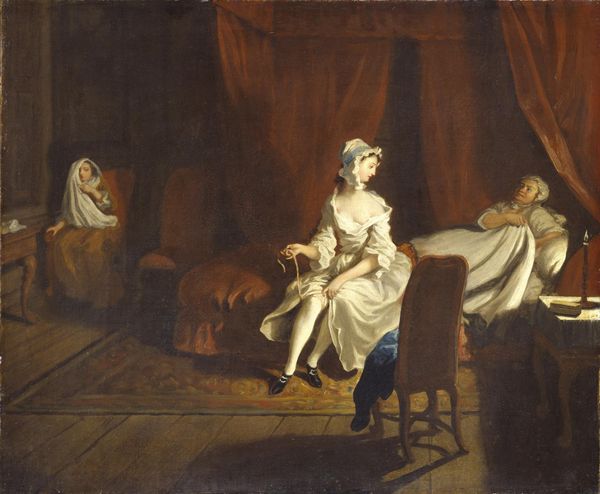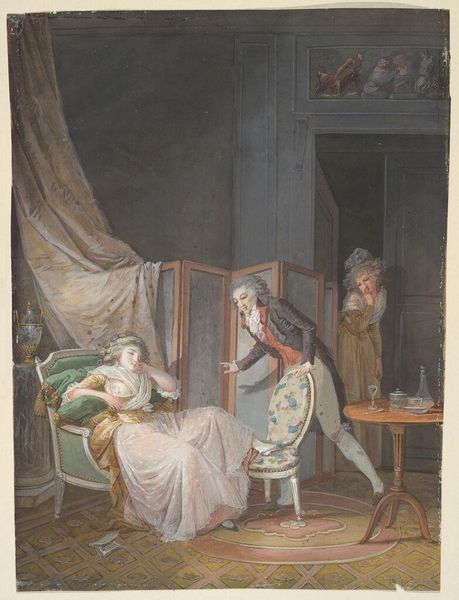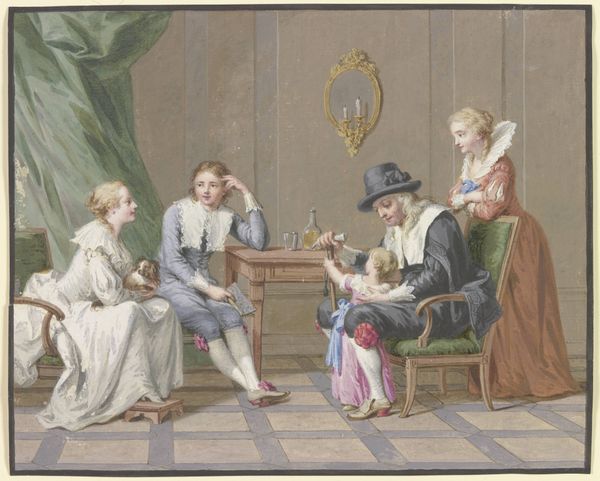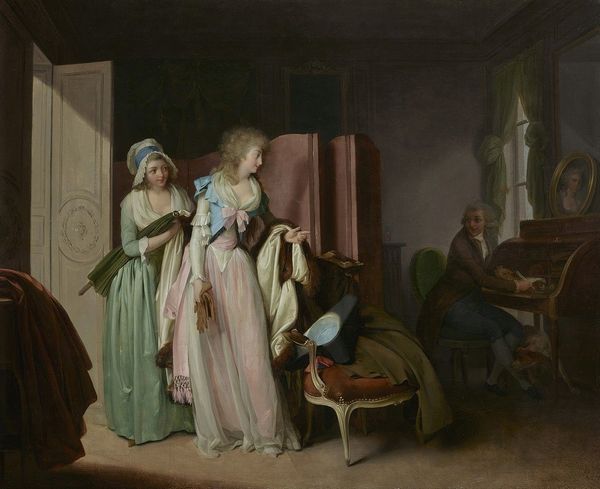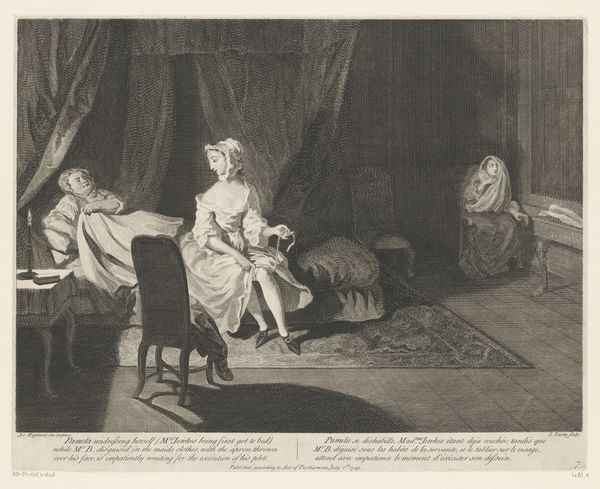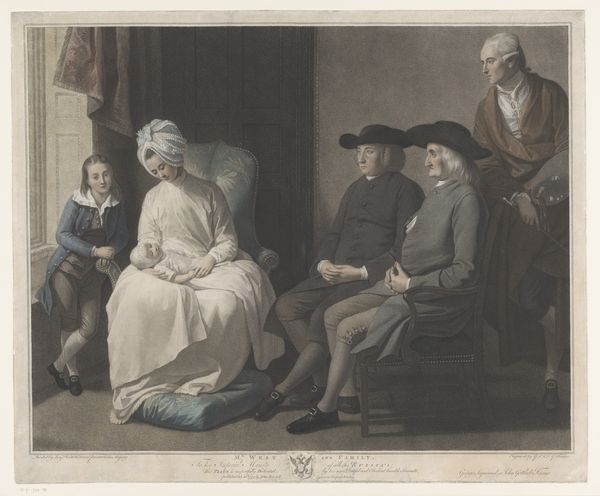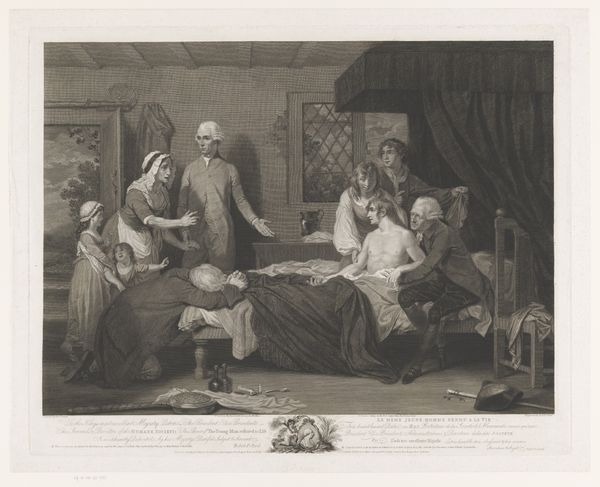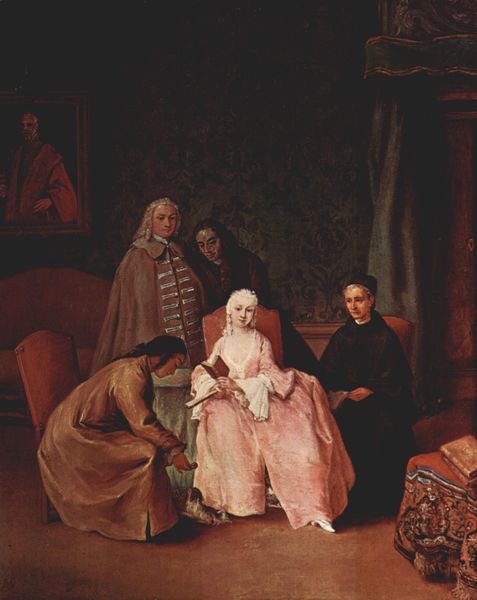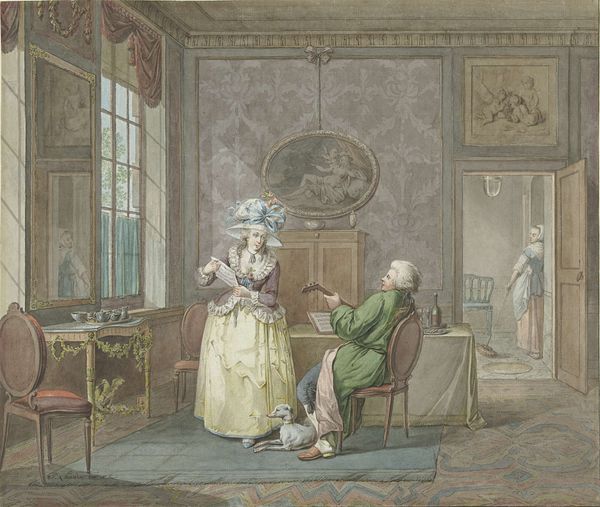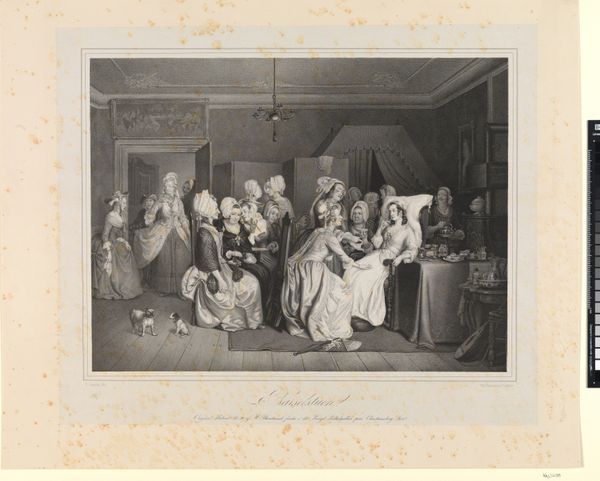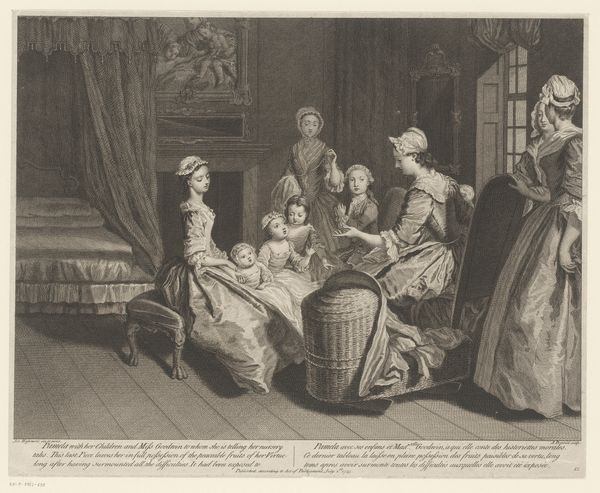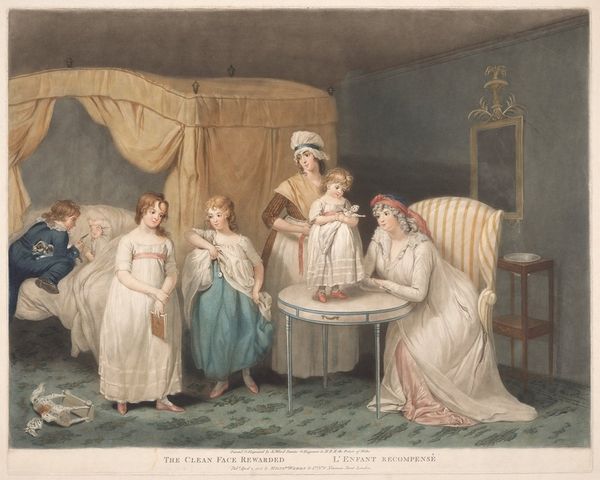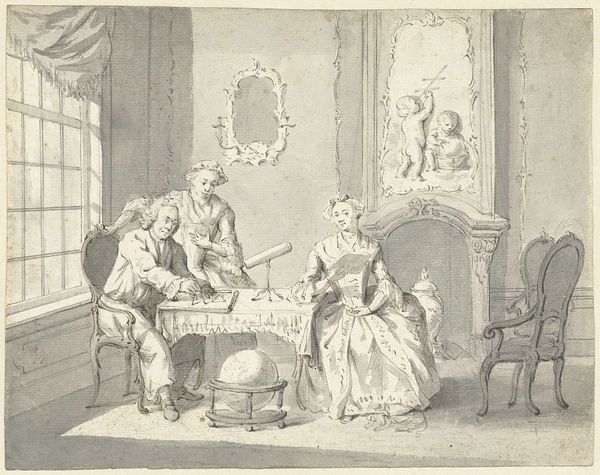
Madame Royale Cared for by Doctor Brunier, January 24, 1793 1788 - 1798
0:00
0:00
drawing, print, watercolor
#
portrait
#
drawing
#
neoclacissism
# print
#
watercolor
#
history-painting
#
academic-art
#
watercolor
Dimensions: Sheet: 14 3/16 × 20 11/16 in. (36 × 52.5 cm)
Copyright: Public Domain
Curator: This somber image is titled "Madame Royale Cared for by Doctor Brunier, January 24, 1793," a watercolor by Jean-Baptiste Mallet, likely created between 1788 and 1798. The scene portrays the imprisoned daughter of Louis XVI, Madame Royale, in what appears to be a moment of illness and care. Editor: The atmosphere strikes me as overwhelmingly melancholic. The pale colors, the barred window, and the downturned faces all convey a deep sense of despair and confinement. Even the canopy bed can't hide the stone walls. Curator: Indeed. Mallet painted this image in the style of academic art in the Neoclassical period to portray a scene laden with historical significance. The drawing is thought to document Madame Royale’s experiences after her father’s execution, highlighting the trauma inflicted on the royal family during the French Revolution. This work offers a window into a transformative moment in French history and society. Editor: Yes, the piece certainly prompts me to reflect on the public role of the monarchy. I'm struck by how art functions as evidence here. The artist implicates those who supported Louis's execution. They show the ripple effects on those innocents left to grieve—the drawing seems intent on eliciting public sympathy. I keep coming back to the little girl in red—was this Madame Royale’s sister? The innocence betrayed is striking. Curator: Historians do believe this girl in red represents the artist’s depiction of Madame Royale’s sister and this historical painting allows the public a chance to observe her and other figures responding emotionally in the aftermath. While drawing primarily on watercolor, Mallet employs printing techniques as well, giving the work texture and creating layered tones. Editor: This work is especially fascinating when considering gender dynamics and power at the time. The Queen is absent. The painting's gaze then trains upon her daughter; her plight of helplessness. The artist clearly signals the monarchy's vulnerability by focusing the narrative on women whose own standing in society is tenuous. Curator: Ultimately, Mallet presents us with a visual testament to a pivotal moment in French history. He also prompts us to contemplate the intersection of personal suffering and larger political upheavals, as seen through an artistic lens. Editor: Absolutely. Looking at this drawing from today's vantage point, I reflect on how social structures crumble, but personal narratives endure in the art—prompting, I hope, collective memory and maybe even public reflection.
Comments
No comments
Be the first to comment and join the conversation on the ultimate creative platform.
